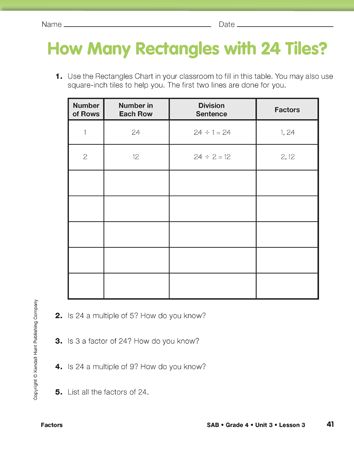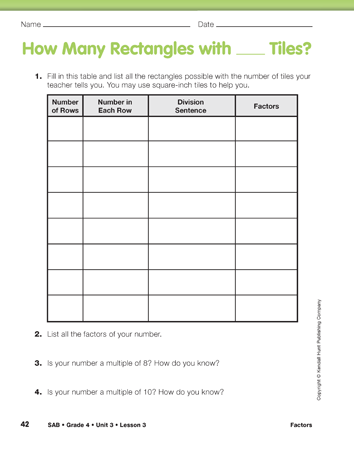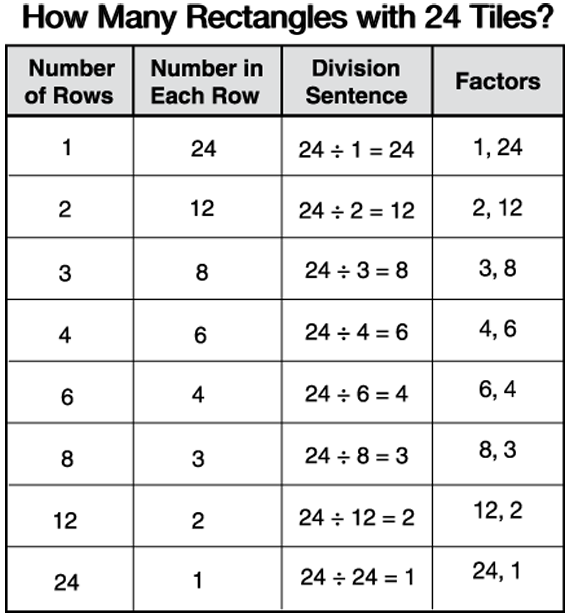Factors
Est. Class Sessions: 2–3Developing the Lesson
Part 2. Finding More Factors
Find the Factors of 24 Using Rectangles. Direct students to the How Many Rectangles with 24 Tiles? page in their Student Activity Book. Ask students to fill in the table. As they work, students can use their calculators or they can refer to the rectangles class chart they made in Lesson 1. In this table, students write division sentences instead of multiplication sentences and they name the factors as they find them. A completed table is shown in Figure 1.
Using division to look for factors is helpful, particularly when using calculators.
From their charts, students can find that the factors of 24 are 1, 2, 3, 4, 6, 8, 12, and 24. Note: It is not necessary to list rows with 6, 8, 12, and 24 tiles, as in the table. Some students might prefer to make this complete list. Remind them, however, that the rectangles showing turn-around facts (e.g., 3 rows with 8 in the row and 8 rows with 3 in the row) are considered the same rectangle.
After discussing the factors of 24, ask student pairs to complete Questions 2–5 on the How Many Rectangles with 24 Tiles? page in the Student Activity Book. The next Student Activity Book page, How Many Rectangles with _____ Tiles?, allows you to tailor the activity to the needs of your students based on their success with How Many Rectangles with 24 Tiles? You can ask struggling students to find the factors for 18 or 30. Students who are ready for more of a challenge can find the factors of 36, 56, 72, or some other number that has numerous factors. As students are finding the factors of a number, they are also getting practice with their multiplication and division facts.
Questions 7–15 in the More Finding Factors Problems section of the Homework section in the Student Guide can be assigned at this time.
















